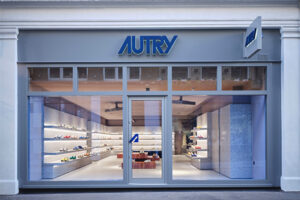Award-winning is always a reason to celebrate. Thus, at the end of last year, TconcepT, based in The Hague, popped champagne corks once again. As the design firm specializes in architecture, concepts, and placemaking, won the Best Retail Architecture Turkey Award for Büyükyali in Istanbul. The project that is a combination of new and historical projected buildings is located at the very intersection of all new transportation systems – road, sea, and rail systems – in Istanbul, right beside the Historic Peninsula. The retail scheme is integrated in a mixed-use area that includes houses of various concepts and sizes, a hotel, as well as a theatre, a cinema, F&B, a biomarket, and artistic and cultural areas.
For Frank van Dongen of TconcepT, Büyükyali is an example of how placemaking works: “I am not quite sure everybody understands what placemaking means. It’s actually a way of thinking. Having been part of a development company for twenty years, creating ‘places to be’, we have developed a way of thinking. The essence of this development company involves switching from thinking in terms of creating buildings to thinking in terms of creating space – changing one’s thought process from the fact that space costs money to the reality that space creates value. It’s about creating quality, and quality sells. Quality, identity, and public space are integrally connected, and that attracts people. Places with strong stories, messages, and lively, vibrant spaces that are connected become absorbed by the surrounding urban fabric and make their way into the hearts of people.”

No More Time for Monoculture
This space – the area between buildings – carries architecture and is essential to the success of a project. Many architects only focus on buildings, but before the designing of buildings begins, it is the key to get the urbanism and space between buildings right. “Cleverly placed public space creates volume and value. Don’t forget: Without the masses and high-rises, New York’s Central Park would not exist. Density creates space, and these spaces should be well designed. The human scale is an essential factor in the understanding of placemaking. Buildings are essential in creating identity. We densify inner cities and shopping areas, we add housing, offices, leisure, F&B, public functions, etc. At the same time, we make them greener, more sustainable, and create attractive spaces,” adds Willem-Joost de Vries of TconcepT. The densification and diversity in functions create a 24-hour mix and this attractiveness will drive the customer. According to TconcepT’s experts, there is no more time for monoculture. Mixed use and flexibility, create a third space, like that showcased in city centers, is the way forward. Multifunctional plinths will change color based on economics. Change- and design-flexible buildings should be embraced. A factory can become a co-working space, and a shop can be transformed into a house.
Another example of placemaking that lives up to this claim is Finestrelles, which opened its doors near Barcelona on November 28, 2018. The nearly 40,000-square-meter mall, designed by TconcepT, forms a harmonious whole together with a student residence. The complex is an open scheme and opens up to the neighborhood with many entrances. It offers various piazzas, terraces, other resting places, and even a swimming pool. Visitors should not feel obliged to buy or consume. They can also simply stop by to relax and feel the buz.

Looking at the Bigger Picture
Van Dongen explains the objectives regarding Finestrelles and similar projects: “When we focus on retail, we know the trends: internet sales are rising, shopping centers are struggling, and more food offers are needed, as are better meeting points and touch points, more experience, and more leisure. Yes, we can cosmetically improve malls, but things really get interesting when investors have the courage to look at the bigger picture and realize that in order to attract customers, changes need to be made.”
This should not only be done via the changing of the tenant mix, but also via the addition of a mix of functions and the creation of indoor and outdoor spaces that will have effect on the hearts of the people. This will require an investment, but the effect on the footfall and the value of the whole center will be clear. People shop on the internet, spend their time on social media, and work at home. However, they will always need and want to go outdoors to places to meet, to rest, to walk, to learn, to get inspired, and to consume.
Historic areas and inner cities enjoy unbroken popularity among people, reports De Vries: “Identity is important, keeping the city’s history alive, by creating layers of old and new. This is a big advantage for us, even if monument protection comes into play. Combining historical areas with modern icons or contextual buildings strengthens the identity.”
Last year, the Sheffield City Council officially presented TconcepT’s redevelopment plan for UK developer Queensberry, which will provide a dynamic and vibrant mixed-use district in the heart of the city center, with the goal of making the Middle English metropolis an even more exciting and interesting place to live and work. Under the project name “Heart of the City II”, a centrally-located 167,000-square-meter site is being redesigned. It is one of the UK’s largest urban regeneration schemes. The phased opening will commence this year and should be completed by 2026.
There are differences due to climate and culture in the individual countries. However, the bottom line is that, according to the experts at TconcepT, people nowadays want the same thing when it comes to properties featuring retail elements: a mixed, safe, well-designed, friendly, green and comfortable space.






